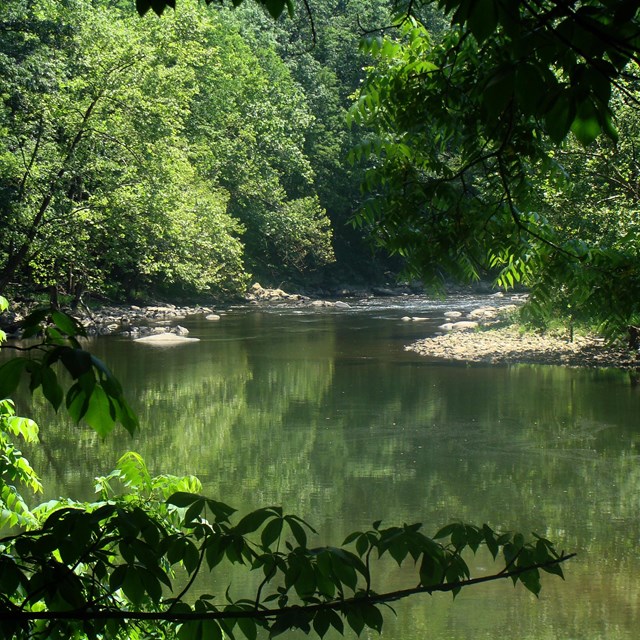
NPS
Upper Delaware Scenic and Recreational River is one of nine parks in the Eastern Rivers and Mountains Network which is part of a nation-wide effort of the National Park Service to generate scientifically sound information on the changing conditions of park ecosystems. Each year, our scientists hike extensively throughout the parks stopping to collect information for the long-term monitoring programs listed below. Back at the office they analyze data and share the information with park managers to help them better understand how to best preserve park ecosystems for future generations.
To learn more about these programs and key findings, choose from the options below.
Long-term Monitoring Programs
-
 River Water Quality
River Water QualityWater quality characteristics are critical to understanding, protecting, and improving the fundamental condition of aquatic ecosystems.
-
 Invasive Plants
Invasive PlantsParks monitor and manage invasive plants to protect important biodiversity and historic places.
Articles
Park Species Lists
Species lists are available from NPSpecies, the National Park Service's tool for documenting park biodiversity. Keep in mind that these species lists are a work-in-progress. Changes and updates are made as more species are shepherded through a rigorous vetting process. The absence of a species from a list produced with the tool below doesn't necessarily mean the species is absent from a park.
Select a Park:
Select a Species Category (optional):
Visit NPSpecies for more comprehensive information and advanced search capability. Have a suggestion or comment on this list? Let us know.
Reports & Publications
Find in-depth information on natural resources in Upper Delaware Scenic and Recreational River at the links below.
Source: NPS DataStore Collection 4304 (results presented are a subset). To search for additional information, visit the NPS DataStore.
Source: NPS DataStore Collection 4298 (results presented are a subset). To search for additional information, visit the NPS DataStore.
Source: NPS DataStore Collection 4299 (results presented are a subset). To search for additional information, visit the NPS DataStore.
Source: NPS DataStore Collection 4303 (results presented are a subset). To search for additional information, visit the NPS DataStore.
Source: NPS DataStore Collection 4301 (results presented are a subset). To search for additional information, visit the NPS DataStore.
Source: NPS DataStore Collection 4300 (results presented are a subset). To search for additional information, visit the NPS DataStore.
Source: NPS DataStore Collection 4302 (results presented are a subset). To search for additional information, visit the NPS DataStore.
Citizen Science Opportunities
Bird observations from eBird
Upper Delaware Scenic and Recreational River has one or more “birding hotspots” set up in eBird. Help the park record bird data by adding your bird observations to the appropriate hotspot when you visit the park.
Species observations from iNaturalist
Last updated: November 17, 2021
